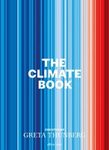![Polar Ice and Global Warming in Cryosphere Regions Polar Ice and Global Warming in Cryosphere Regions]()
Click to have a closer look
About this book
Contents
Customer reviews
Biography
Related titles
About this book
Polar Ice and Global Warming in Cryosphere Regions is based on recent and past climate variabilities data gathered through satellites and spatial-temporal analysis to explain the role of global warming on cryosphere regions such as high-latitude Himalaya, Arctic and Antarctic regions, and the surrounding Southern Ocean and Arctic Ocean. Through several case studies the book describes the atmospheric processes and their interactions with high-latitude regions toward a better understanding of climate variability. Understanding cryosphere regions helps readers develop plausible models for disaster risk management and policy on different polar events.
Features
- Presents a thorough review on climate variability over the Southern Ocean and Antarctica, and the impact of climate variability and global warming on cryosphere regions
- Explains how the inferred climatological environmental conditions using natural archives may shed light on climate scenarios in cryosphere regions
- Includes case studies on globally connected geoscientific phenomena in the Himalayan, Arctic, and Antarctic regions
- Discusses the use of natural archives to explain the current climate scenario in the cryosphere regions
Intended for researchers, academics, and graduate students following oceanography, meteorology, or environmental studies, and those working on projects related to climate change in governmental organizations, institutions, and global NGOs, this book outlines ways in which readers can initiate plans and policies to help mitigate the effects of global warming in these regions.
Contents
1. Cryosphere and Changing Climates - An Introduction
2. Assessment of the Recession Rate and Surface Velocity of the Gangotri Glacier, Garhwal Himalaya India: A Geospatial Approach
3. Modelling a Glacial-lake Outburst Flood of Sona-Sar Lake in the Jhelum Basin of Kashmir Himalayas, India using HEC-RAS
4. Hindukush Karakoram Himalayan Glaciers: A Cryospheric Asset
5. Response of Global Warming on Glaciers of Garhwal, India: A Remote Sensing and GIS Approach
6. Understanding Global Warming through Polar Ice
7. Antarctic Sea Ice: A Climate Change Perspective
8. Effect of Climate Change on the Multi-Fractal Properties of the Sea-Ice Concentration around the Indian Antarctic Satiations Maitri and Bhatri
9. Spatial and Temporal Variations in Antarctic Snow-Ice Energy Balance: A Review of Glacio-meteorological Parameters and Reflectance
10. Spatio and Temporal Variability of Physical Parameters in the Prydz Bay for Climate Change
11. Understanding the Predictability of East Artic Sea Ice in a Warming Environment
12. Spatio-temporal Variation in Surface Mass Balance Patterns of Vestre Broggerbreen Glacier, Ny-Alesund, Svalbard and its Relationship with Climate since 2011
13. Arctic Amplification and Monsoon Variability
Customer Reviews
Biography
Dr Neloy Khare is an Adviser and Scientist G to the government of India at MoES. He has 30 years of experience in the field of paleoclimate research, teaching, science management, administration, coordination for scientific programs (including the Indian Polar Program) etc. Dr Khare completed his PhD on tropical marine regions and has made significant contributions in the field of palaeoclimatology of Southern high-latitude regions (the Antarctic and the Southern Ocean) using Micropaleontology as a tool. Dr. Khare has been conferred honorary professor and adjunct professor by many Indian universities. He has a very impressive list of research publications to his credit, has been a guest editor for special issues of scientific journals, and has authored/edited many books published by leading international publishers. The government of India and many professional bodies have bestowed him with prestigious awards for his humble scientific contributions to Climate Change, Oceanography, Polar Science and Southern Oceanography. The most coveted award is the Rajiv Gandhi National Award - 2013 conferred by the Honorable President of India. Dr Khare sailed in the Arctic Ocean as a part of "Science PUB" in 2008 during the International Polar Year campaign for scientific exploration and became the first Indian to sail in the Arctic Ocean.



































